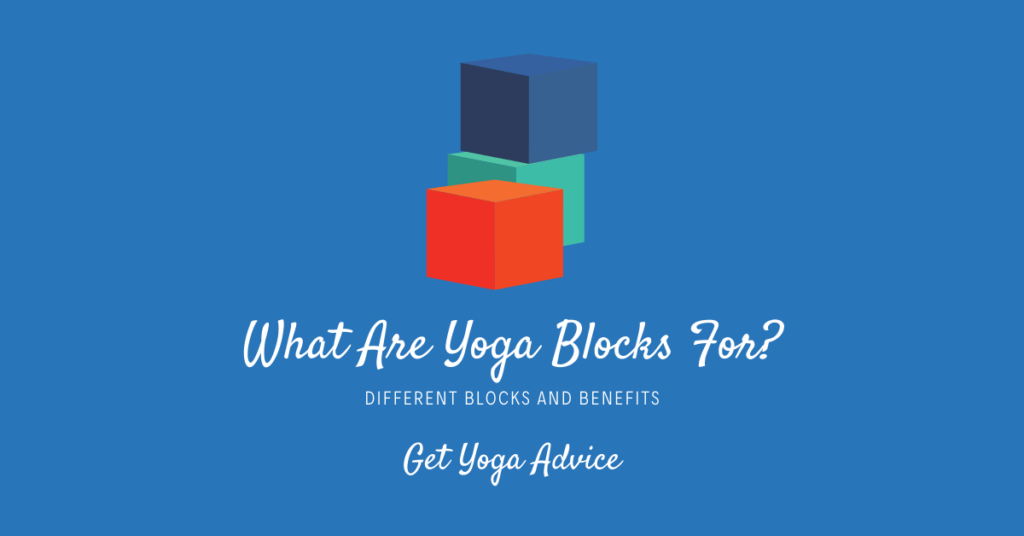Yoga blocks are beneficial to anyone’s yoga practice, but they’re especially useful for beginners or people with an injury or disability that require a little more support to maintain proper alignment when getting into various poses.
A lot of people might feel that they’re too old to get started in yoga, that they’re not flexible enough to be able to do the poses. The truth is that it’s never too late to start doing yoga. There are so many health benefits that starting yoga at any age is worth it.
It’s important to remember that yoga is not a competitive sport. The only person you’re up against is yourself. You have to get in the right frame of mind to get started and to keep going, improving your flexibility and strength as you learn.
If you’re a beginner yogi, a yoga brick or block is an excellent way to get the support you need to increase your confidence and motivate yourself to keep going.
Contents
What Are Yoga Blocks For?
There are several reasons why yoga blocks are useful for any yoga practitioner. A yoga block can be a temporary fix for someone who is just learning or recuperating from an injury, or a permanent adaption for anyone with a physical disability.
One of the most common things people say about yoga blocks is that they bring the floor closer, but if you’ve never used one, you may not understand what that means. In poses where you’re meant to touch your hands to the ground, for example, you can reach for the top of your yoga block instead if you don’t yet have the flexibility to reach to the floor.
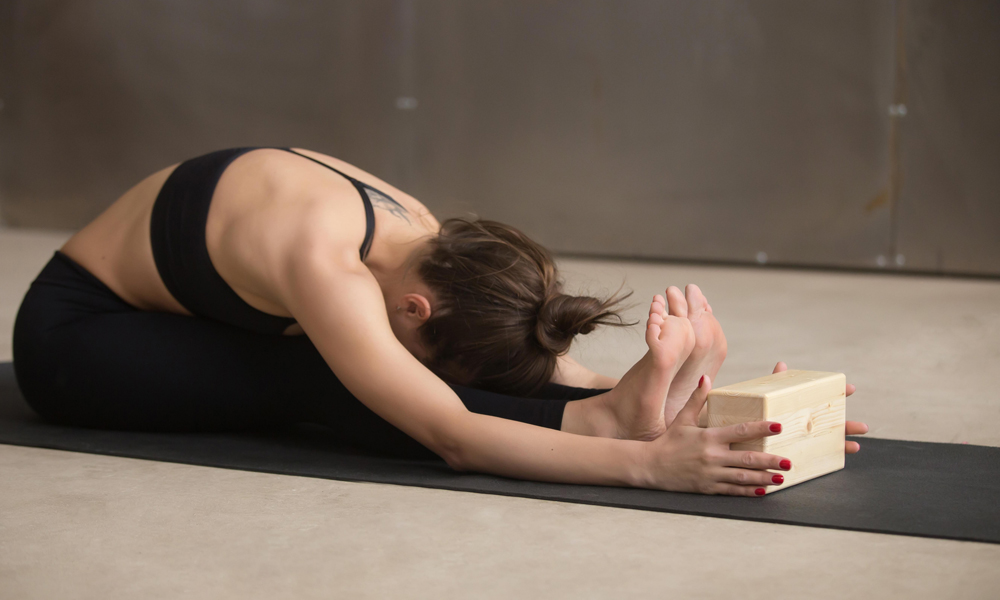
Yoga blocks also help with stability. Sometimes, placing one under your leg or hip adds just the support you need to focus on keeping the rest of your body in proper alignment for the asana you’re working on.
You can also use yoga blocks to increase awareness of your body parts and build strength in certain poses. For example, if you do a warrior pose with a block between your hands, you make sure you keep them the right distance apart. You can also squeeze them to build strength through your arms and shoulders as you hold the pose.
A yoga instructor might also recommend a yoga block to help you learn the proper alignment for a new pose or even a standing posture. By placing a yoga block under your spine or knees when getting into a new pose, you get an idea of the way it’s supposed to feel. As you improve, you should be able to get the pose down pat and remove the block.
For people with disabilities or chronic injuries, yoga blocks become a mainstay of their practice. For example, someone with a back injury that may not be able to safely bend over far enough to touch their toes can reach for a yoga block instead. In this respect, the yoga block is often the only way to achieve certain poses and helps the person continue to practice.
Types of Yoga Blocks
Most yoga blocks are made of cork, wood, or foam. Let’s take a look at the benefits and downsides of each.
Cork Blocks
A cork yoga block is the most eco-friendly option there is. This material is recyclable, sustainable, and natural. The cork is harvested from the bark of cork oak trees, which continue to grow even after the bark has been removed.
This type of yoga block has a naturally rough texture that provides enough friction to prevent the block from sliding around while you’re moving from one pose to the next. They have a nice, supple feel that’s lighter than wooden blocks but with a bit more heft than foam.
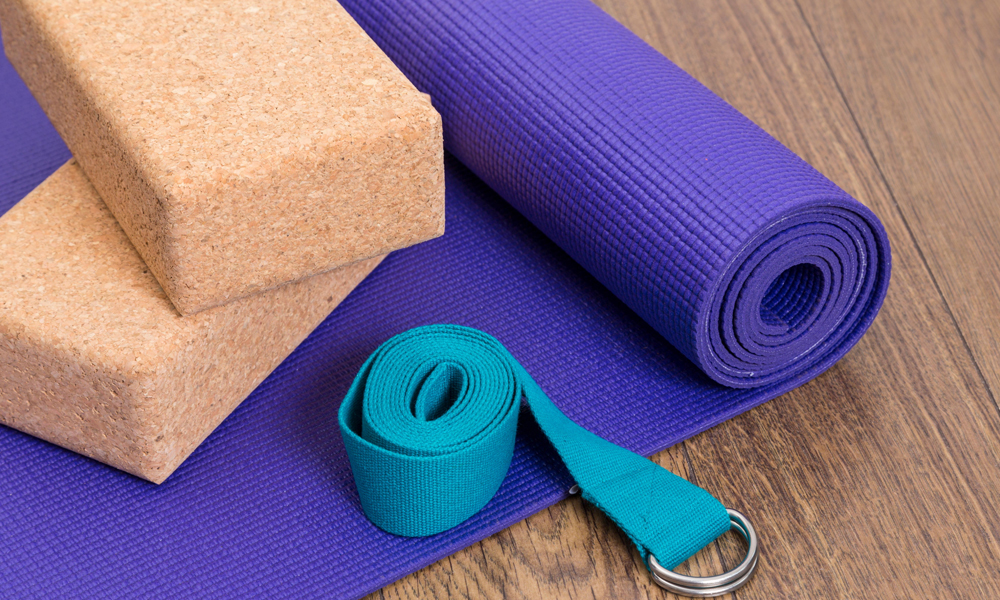
Another great thing about cork is that they maintain their grip even when they are wet. This makes them a great choice for hot yoga and the perfect material for anyone who sweats a lot. You can stack them on top of one another too.
What are the downsides of cork blocks? For one thing, they’re difficult to clean. They’re very porous, so they absorb a lot of sweat and grime that’s difficult to remove. This is not only likely to lead to a foul smell but also impacts the cork’s integrity.
In addition these blocks wear quickly. The sides may begin to flake off and less expensive options often start to crumble around the edges.
Wood and Bamboo Blocks
Wooden yoga blocks have been around the longest and are still preferred by many yogis. These are the heaviest of all types of yoga blocks. They’re thick, firm, and stay put when you use them.
Because a wood yoga block is so heavy, they’re not easy to carry with you to yoga class. That said, they’re exceptionally durable so, if you do choose to toss them in your bag and carry them along, you don’t have to worry about wear and tear.
These blocks are great for strength building and balance because they’re so reliable, but they’re not the best choice for restorative poses because they’re uncomfortable and hard on the spine.
Wooden blocks are also not a good choice for hot yoga. They get slippery when wet, and, though they are really easy to clean, they must be allowed to dry properly before you use them so the grip is not affected.
Though there are other options available, bamboo yoga blocks are the most popular. Bamboo is sustainable. It grows insanely fast – up to three feet in a single day in the right conditions – so it’s a lot more eco-friendly than wood.
The biggest downside to wooden and bamboo yoga blocks is that they’re the most expensive, but, that said, they also last practically forever. A lot of them even come with a lifetime guarantee, so you definitely get what you pay for.
Foam Blocks
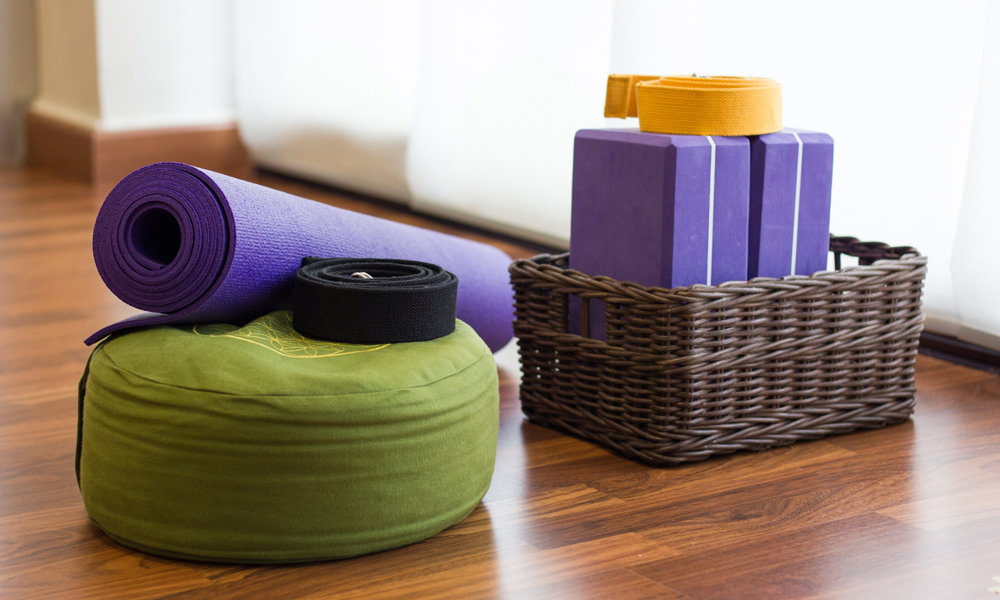
There are a lot of options out there when it comes to foam blocks, from well-known names like the Gaiam yoga block to inexpensive foam yoga blocks that may be attractive to beginners. Just like cork or wood, this material has its pros and cons.
Foam blocks are the lightest material available, so they’re easy to carry with you for travel or to the yoga studio. They’re firm but have a little bit of give so they’re good for sitting and standing positions. They’re also easy on the spine and pelvis, so they’re great for restorative yoga too.
These blocks are available in all kinds of colors, and even the higher-end options are affordable when compared to wooden blocks. They aren’t slippery and are easy to clean, making them great for just about any pose and an ideal choice for hot yoga.
Foam blocks do have some downsides though. They are the least eco-friendly of all your options, and, while this doesn’t bother some people, a lot of yogis try to practice sustainability so they avoid this type of block or look for one made of recycled foam.
While foam is firm and has a good grip, it’s not nearly as durable as wood or even cork. It gets dented and scratched easily and doesn’t last very long.
If you’re a beginner, though, a foam block is a great place to start. It gives you a feel for how to use a block, and the benefits you’ll get out of it, before you invest more money into something that’s made to last a while longer.
How to Clean Your Yoga Block
Cleaning your yoga block is important because it helps maintain the integrity of the material and prevents buildup that can cause it to lose grip, making it less reliable and less safe.
Foam yoga blocks can be quickly washed with dish soap and some water. Some foam yoga blocks can be run through the washing machine and left to air dry, if they are smelly or have deep seeds. Before you take this route, though, make sure you read the instructions included with your block.
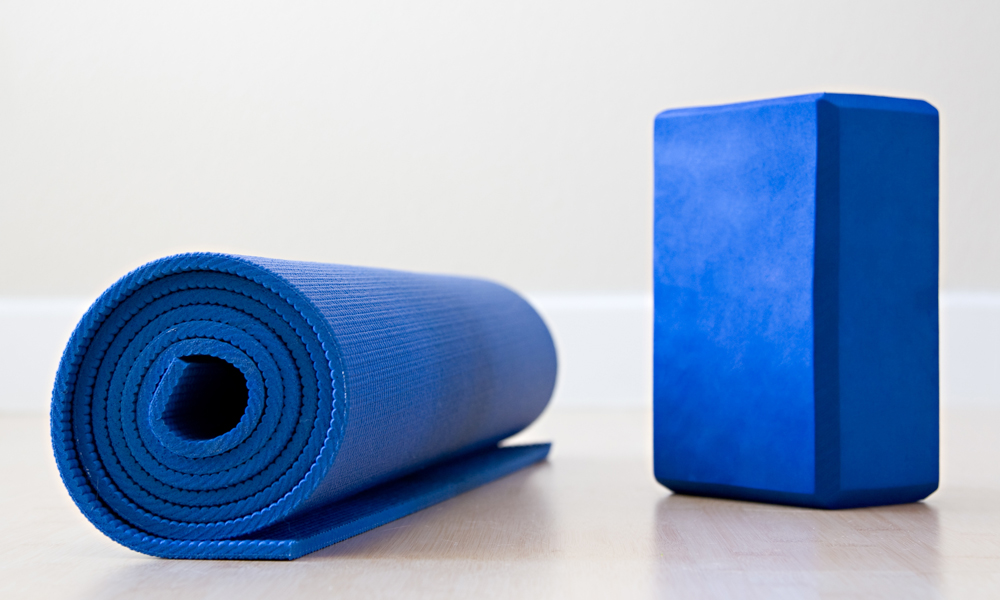
Cork yoga blocks are the most difficult to clean because it’s difficult to get out any soaked-in stains. Use a wet cloth to clean the surface. For particularly stubborn areas, use a gentle cleanser and allow it to air dry completely before using it.
Wooden blocks are easy, just wipe them with a damp cloth or use cleaning wipes. Wooden blocks are slippery when they’re wet, so allow them to dry completely before using them.
Yoga Block Sizes
Another thing to consider about yoga blocks is size. These props are not one-size-fits-all. Generally, there are three size options to choose from: three, four, and five inches.
Three-Inch Yoga Blocks
This size measures 3 by 6 by 9 inches and is the smallest of the yoga blocks available. They’re specifically made for people with smaller frames that might have a hard time gripping something larger. Small blocks like this may also come in handy during restorative yoga and are the most affordable option.
Four-Inch Yoga Blocks
This is considered a standard size block, typically measuring 4 x 6 x 9 inches. They are widely available and extremely popular. If you’ve ever borrowed a yoga block from the studio, this is most likely the size it was.
Five-Inch Yoga Blocks
These are the largest yoga blocks available. They typically measure 5 by 12 by 6.75 inches and are perfect for tall yogis or those with big hands. That said, experienced yogis who are highly flexible also find them useful, no matter what size they themselves are.
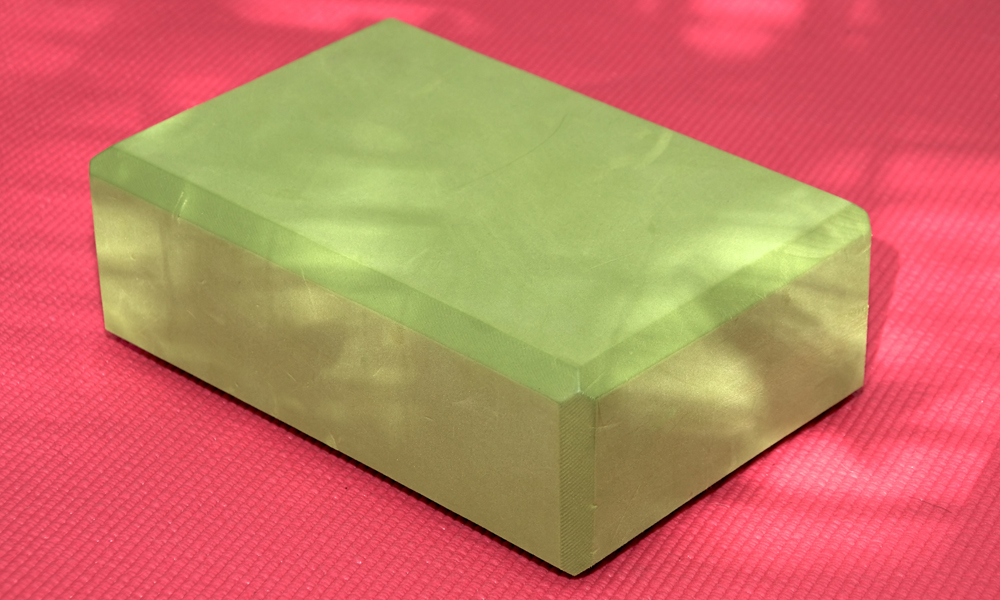
Large blocks of this size can also be used to promote deep breathing in some poses, and their size makes them extremely stable.
Things to Know
Yoga blocks are used in different ways depending on the asana, but there are a few things to know about them before you begin putting them into practice.
First, you can adjust them between all three heights, depending on how much support you need. This is a nice feature of these yoga props because you get a lot of use out of them. Start with them positioned tall when you’re first learning and, as you improve in your practice, lower them to the short position and then to the flat side. This way, you have three levels to work through as you work up to being able to get to the ground.
Another thing to remember is that the different materials are all useful for different things, so, depending on the type of yoga you practice, you may want to invest in a few types. For example, get a nice foam block for restorative yoga, a cork one to carry with you to class, and a wooden one to work on alignment and difficult asanas at home.
Another way you can use yoga blocks is by stacking them. Sometimes, you may find you need a lot of support when working on more difficult poses.
How to Use a Yoga Block
No matter how much experience you have, there may come a time when you find a pose that you need a little extra help with. Here are some examples of when a yoga block may come in handy.
For Alignment
A great example of using a yoga block for alignment is when doing the pigeon yoga pose. This is a great hip opener but can be hard for people who don’t have a lot of flexibility in the hips and thighs.
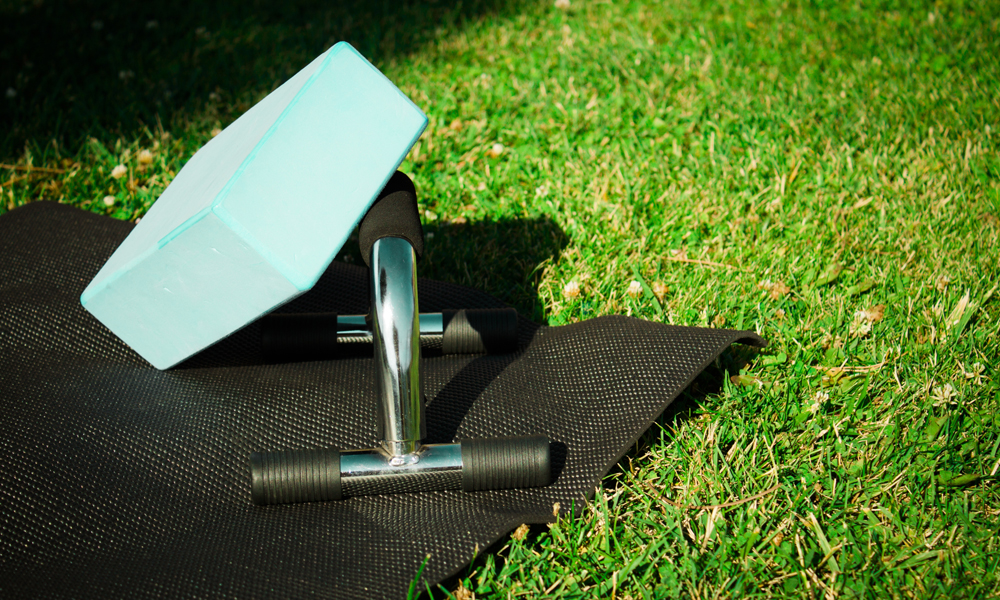
To do it, move from a downward-facing dog, bringing your right shin forward and parallel to the front of the mat. Move your right knee toward your right wrist, leaving the left foot extended behind you with the top of your foot against the ground.
Place the yoga block under the buttock of the bent leg to help keep the body in alignment as you bend forward and reach your arms out in front of you. You can also cross your arms and place them on the floor in front of you, using them as a pillow as you bring your head as far forward as possible.
For Stability
Bridge pose is a great example of how to use a yoga block for stability. To do this pose, lie flat on your back. Then, bend your knees, putting your feet flat on the floor, and lifting your pelvis. Keep your arms at your sides and your shoulders against the floor.
Place a yoga block under your sacrum to support your back to provide additional stability while you hold the pose. They’re useful for triangle pose and other standing poses, too, if you’re not flexible enough to reach your foot.
For Restoration
Yoga blocks are great for restorative yoga. Child’s pose is a great example. Get on your hands and knees on your yoga mat, then slowly lower your buttocks so you’re sitting on your legs. Lean your upper body forwards with your arms reaching out in front of you.
To do a full child’s pose, you should touch your forehead to the floor. If you have a hard time doing this, place your yoga block in front of you, and rest your forehead on it until you are flexible enough to get to the floor. You can also deepen the stretch in your shoulders by placing a yoga block under each hand.
For the Advanced Yogi
There are even some advanced poses that can be enhanced by using yoga blocks. Lotus pose is one of the most recognizable yoga asanas, but it’s incredibly difficult to master – so difficult it is recommended that you don’t try to do it without the guidance of an experienced yoga teacher.
Once you master it, though, you might want to try a lotus hip lift. In lotus position, you sit with your back straight, legs crossed so that each foot is touching the opposite thigh. From here, you can transition to a lotus hip lift.
This involves placing your palms on the ground and using your arms and torso to lift your body off the ground, holding yourself up with your hands. It’s a difficult move to do, though placing a yoga block under each hand makes it a little easier by bringing the floor a little closer.
Final Word on ‘What Are Yoga Blocks For?’
Yoga blocks are a useful tool for any yogi, no matter how much experience they have. Though they can support and elevate just about any pose, yoga blocks are particularly useful for beginners, people who are recovering from an injury, or those who have a physical disability to compensate.
In short, yoga blocks make yoga exercises accessible to people who may otherwise not be able to advance their skills or even begin to practice.
There are multiple types of yoga blocks available. Which is the right yoga block for you depends on a few factors, including how you’re planning to use it and whether or not you want to be able to easily travel with it. Regardless of what type you use, you’re sure to find many uses for your yoga block once you get the hang of it.

